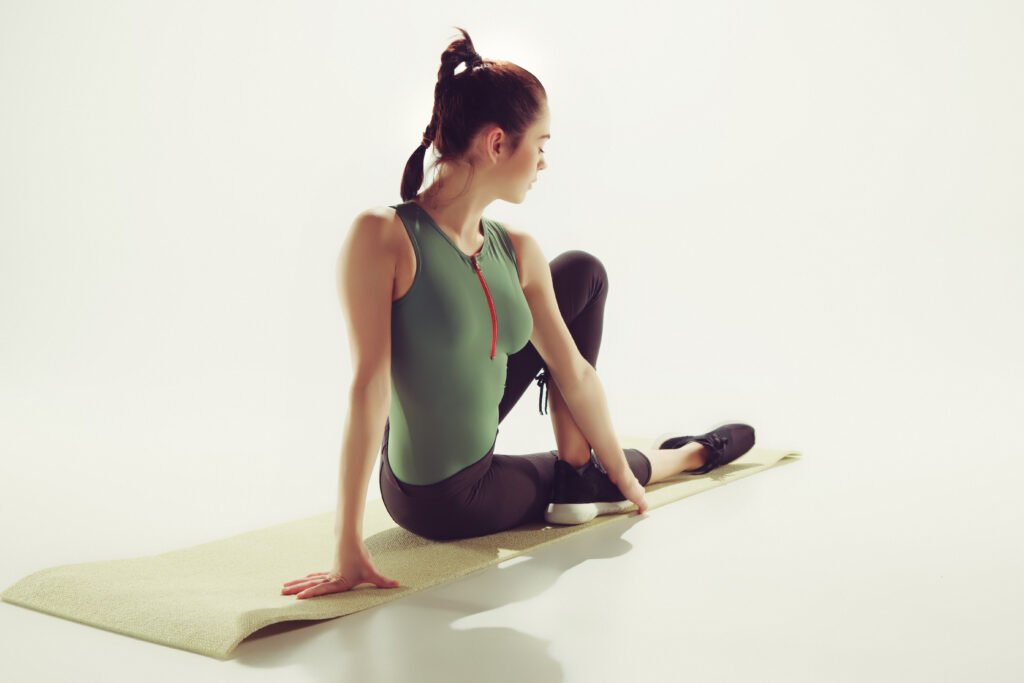
Yoga has long been regarded as a comprehensive health practice that integrates the mind, body, and spirit. Somatic yoga is distinguished from other yoga methods by its own method of improving the mind-body connection. This article explores the tenets, advantages, and techniques of somatic yoga, providing you with a thorough manual on how to incorporate this life-changing practice into your daily routine.
What is Somatic Yoga?
A calm and contemplative style of yoga, somatic yoga places an emphasis on the body’s internal perception and experience. “Somatic” comes from the Greek word “soma,” which means “living body.” In contrast to conventional yoga, which frequently emphasizes completing particular poses, somatic yoga places more emphasis on the body’s interior sensations and motions. By encouraging practitioners to become more cognizant of their mental and emotional emotions, this method promotes a strong mind-body connection.
The Principles of Somatic Yoga
Awareness: A key component of somatic yoga is developing an acute awareness of one’s own body’s experiences. Those who practice this skill learn to pay attention to their bodies’ subtle movements and sensations.
Gentle Movement: Somatic yoga involves careful, slow movements that enhance one’s awareness to the body’s response. This care facilitates healing and lessens the risk of damage.
Mindfulness: Somatic yoga incorporates mindfulness into all aspects of practice, including movement and breathing. This awareness serves to close the gap that exists between the conscious mind and the physical body.
Self-Regulation: Through deliberate movement and breathing exercises, somatic yoga instructors help practitioners manage stress, tension, and discomfort.
Benefits of Somatic Yoga
Somatic yoga improves mental and emotional well-being in addition to physical conditioning. The following are some main advantages:
Improved Mind-Body Connection: Somatic yoga enhances the mind-body connection by emphasizing interior sensations. Better self-awareness and emotional control may result from this strengthened connection.
Stress Reduction: By stimulating the parasympathetic nervous system and encouraging calmness and relaxation, the conscious techniques of somatic yoga aid in reducing stress.
Pain Relief: By addressing the underlying causes of tension and discomfort, somatic yoga’s gentle practices and concentration on body awareness can help reduce chronic pain and increase mobility.
Increased Strength and Flexibility: Somatic yoga, while its mild approach, builds strength and flexibility by promoting full range of motion and attentive muscle engagement.
Emotional Healing: Somatic yoga promotes a deep sense of self-awareness that can aid in the release of emotionally buried trauma, resulting in resilience and emotional healing.
How to Practice Somatic Yoga
Preparing for Your Practice
Establish a Calm Environment: Pick a peaceful, cozy area where you may practice without interruptions. This will assist you in concentrating on your inner feelings.
Collect Your Props: A yoga mat, blankets, cushions, and any other items that enhance your comfort throughout the practice may be necessary.
Set an Intention: Prior to starting your practice, take a moment to establish your intentions. This may be “I will move with mindfulness” or “I will listen to my body.”
Key Somatic Yoga Practices
Breath Awareness First, find a comfortable posture to lie down.
Grasp your abdomen with one hand and your chest with the other.
Take note of your natural breathing pattern, noting how your chest and abdomen rise and fall.
Breathe more deeply gradually, letting your belly expand fully on each inhalation and relax on each exhale.
For five to ten minutes, keep doing this while concentrating on your breathing sensations.
Somatic Movement Sequences Pelvic tilts include lying on your back with your feet flat on the ground and your legs bent. As you slowly tilt your pelvis forward and backward, pay attention to how your lower back moves. This exercise might aid in releasing hip and lower back strain.
Get down on your hands and knees in the cat-cow pose. Take a breath as you curve your spine in the cat pose and inhale as you arch your back in the cow pose. As you move slowly, be mindful of how your spine and abdomen feel.
Arm Circles: Take a comfortable stance or sit. Spread one arm apart and start moving slowly in moderate circles. Take note of how your shoulder blade and the surrounding muscles move. Continue on the opposite side.
Body Scanning Close your eyes and find a comfortable posture to lie down.
Start by focusing your attention to your toes and noting any tension or sensations there.
With no judgment, gradually raise your awareness to your head, arms, torso, legs, and feet.
If you feel tense in any places, picture sending your breath there and letting it relax and soften.
Guided Imagery Choose a comfortable position to sit or lie down.
Close your eyes and visualize a place where you are totally at ease and secure. This location might be imagined or actual.
Use all of your senses to picture yourself here. Pay attention to what you hear, smell, see, and feel.
Take a few minutes to immerse yourself in this imagery and feel the calm and serenity it provides.
Integrating Somatic Yoga into Your Daily Routine
Morning Practice: To awaken your body and mind, begin your day with a quick somatic yoga practice. Setting a positive tone for the day ahead can be achieved with gentle movements and breathwork.
Midday Break: Practice breath awareness or do a quick body scan for a few minutes during your lunch break. Throughout the remainder of the day, this can help lower tension and increase focus.
Evening Wind-Down: To decompress at night, do somatic yoga. You may assist your body get ready for a good night’s sleep by using guided imagery and gentle movements to relieve the stresses of the day.
Moving With Awareness Throughout the Day: Include deliberate exercise in your everyday routine. Whether you’re sitting, standing, or working at a desk, be mindful of your posture and gait.
Advanced Somatic Yoga Practices
Proprioceptive Neuromuscular Facilitation (PNF)
PNF is a method for improving strength and flexibility. Muscles are alternately contracted and stretched during this exercise.
For instance, raise one leg while lying on your back. For a few seconds, contract your leg by pressing it against your hand; after that, release the tension and gradually extend the leg.
Feldenkrais Method
This approach emphasizes the use of mild, focused exercises to improve movement patterns.
Lying on your back and gradually experimenting with different side-to-side rolling techniques is one technique. Take note of how even small adjustments to your gait can impact your ease and comfort.
Alexander Technique
In order to ease tension and enhance movement efficiency, the Alexander Technique places a strong emphasis on alignment and posture.
Recognize the natural curves of your spine when you sit and stand. Do not hunch over or arch your back excessively.
The Science Behind Somatic Yoga
The benefits of somatic yoga for enhancing health and wellbeing have been demonstrated by research. Research has demonstrated that conscious movement techniques, such as somatic yoga, can:
Decrease Chronic Pain: Somatic practices have been shown to considerably reduce chronic pain symptoms and enhance quality of life, according to a study published in the Journal of Pain Research.
Improve Emotional Regulation: Studies published in Frontiers in Psychology have shown that somatic activities can improve emotional regulation and lessen depressive and anxious symptoms.
Enhance Body Awareness: Research published in Body, Movement, and Dance in Psychotherapy showed how somatic activities can improve one’s awareness of one’s body, which in turn promotes improved self-care and general wellness.
Conclusion
Your mind-body connection can be profoundly enhanced and your general well-being can be improved with somatic yoga. You can enjoy better physical and mental health, less stress, and increased self-awareness by concentrating on your inner feelings and engaging in mindful movement. Including somatic yoga in your routine may change both your practice and your life, regardless of your level of experience.
Always pay attention to your body, move mindfully, and welcome the journey of self-exploration that somatic yoga provides. You’ll discover that consistent practice has profound effects that go well beyond the mat and improve all facets of your life.





